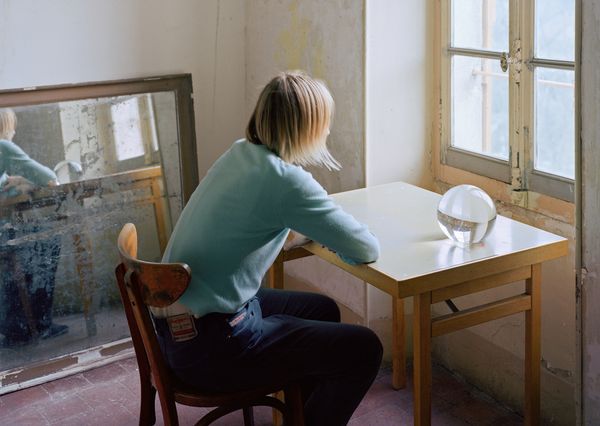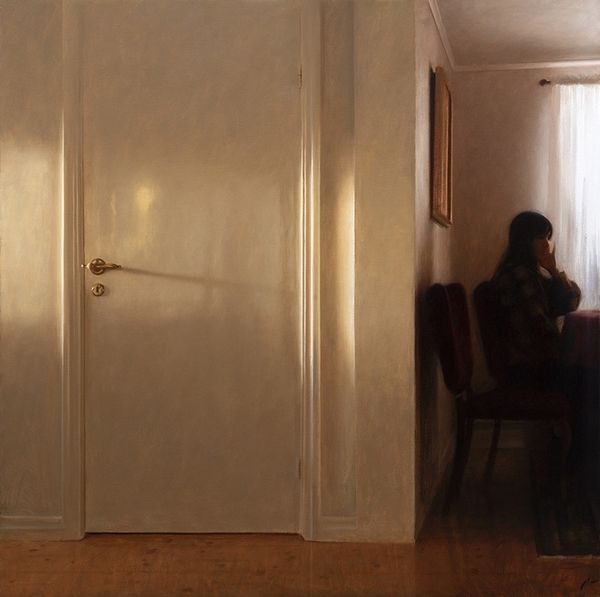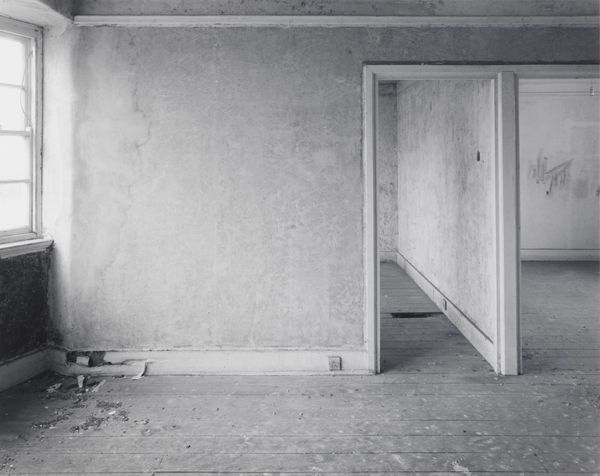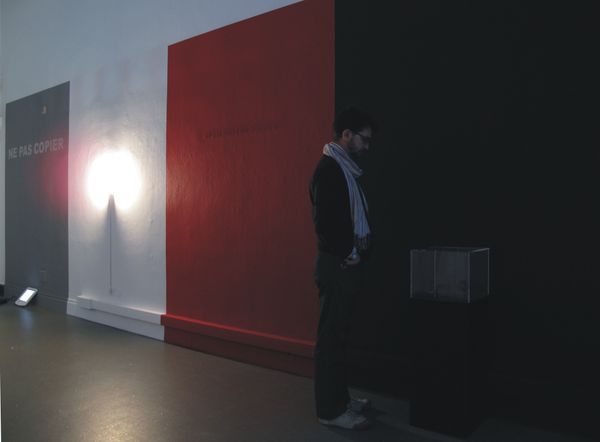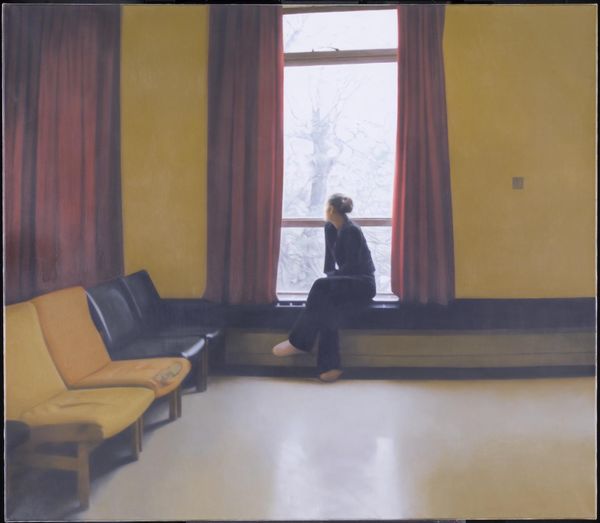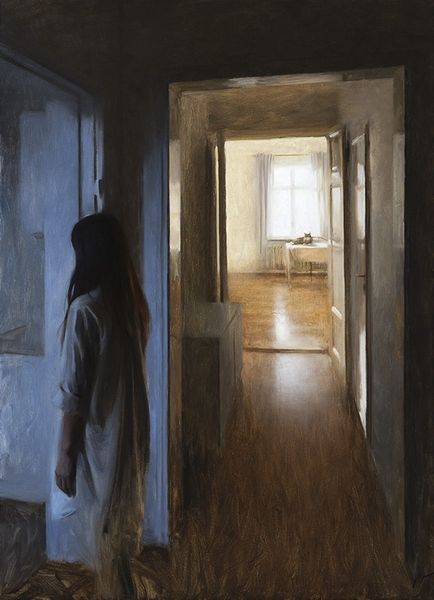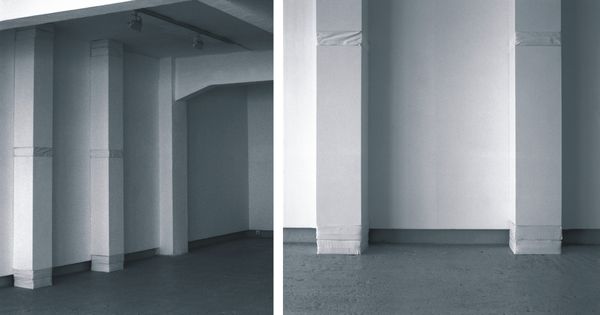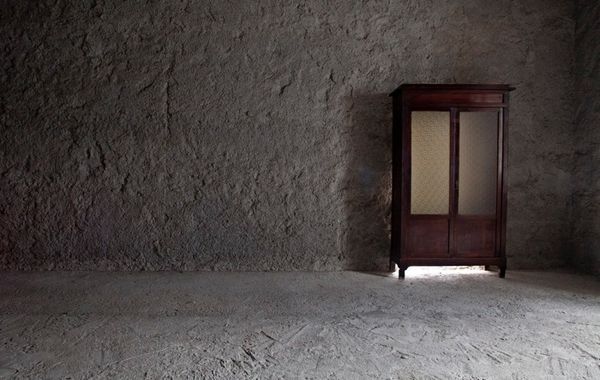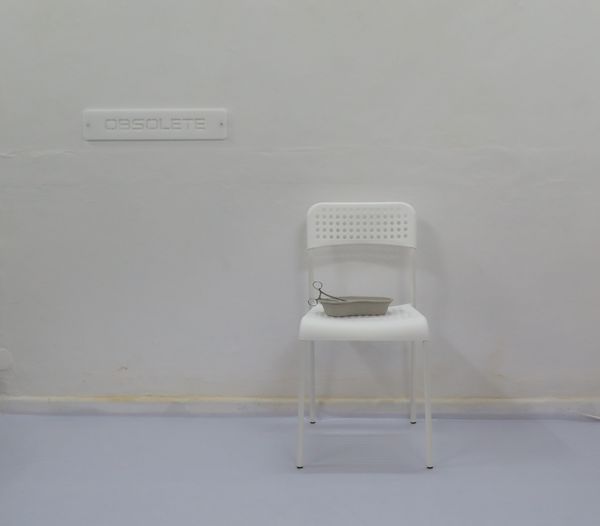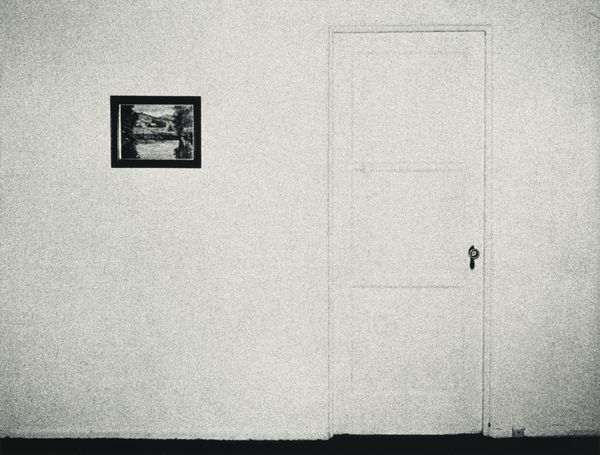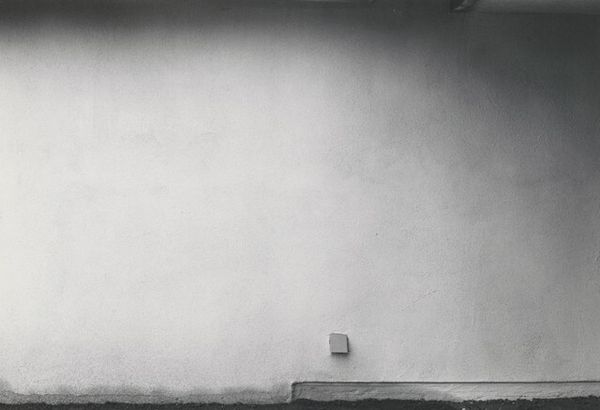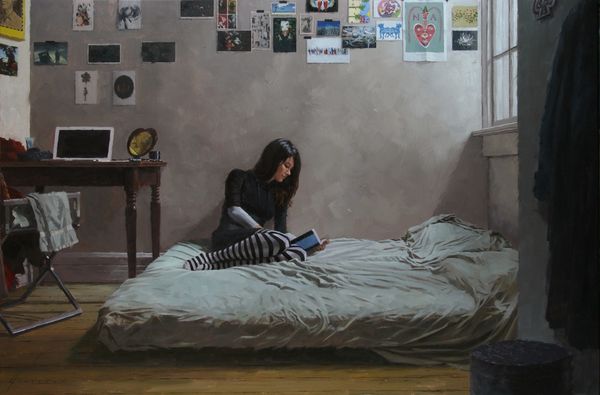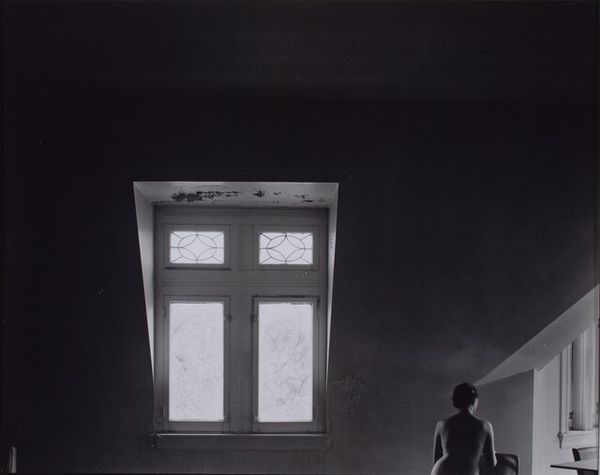
photography
#
portrait
#
contemporary
#
photography
#
figure photo
#
muted colour
Dimensions: image: 120.65 × 160.02 cm (47 1/2 × 63 in.) mount: 140.02 × 178.91 cm (55 1/8 × 70 7/16 in.)
Copyright: National Gallery of Art: CC0 1.0
Curator: Hai Bo’s photograph, “Shadow-3,” likely taken between 2009 and 2018, presents us with a stark scene. What’s your immediate take? Editor: A profound sense of isolation permeates this image. The muted palette and vast, empty room evoke a feeling of melancholic contemplation. The figure, back turned, is dwarfed by the space. Curator: Absolutely. Note the strategic composition—the large format enhances the geometric play of light and shadow on the walls. The photograph relies on strong horizontal and vertical lines, creating a grid-like structure. See how the window panes echo the easel's rectangular form. Editor: Yes, the structural elements contribute to that feeling of confinement, but consider the symbolism. We see the artist positioned before a blank canvas. This, paired with the skull placed prominently on the table, reads to me as a stark confrontation with mortality and the burden, or maybe the impossibility, of creation. It is evocative of historical paintings. Curator: The inclusion of the skull definitely complicates the image. We are positioned to examine the relationship between form and symbolic content within a defined pictorial space. The light and shadow are carefully managed to guide the viewer's eye and balance the composition. Editor: For me, it's hard not to read this through a political lens as well. Given Hai Bo's body of work often touches on historical memory and cultural displacement in China, I can't help but feel that this portrait may allude to feelings of creative constraints on artistic production in the country today. What limitations are these on cultural memory? The blank canvas and death imagery might reference a censorship of expression. Curator: An interesting, though certainly not the only interpretation. Whatever it suggests, its stark aesthetic leaves an undeniable impact on any viewer willing to grapple with its various, though perhaps not immediately obvious, symbolic gestures. Editor: Indeed. And maybe it's this ability to resist straightforward interpretation which is the power of art!
Comments
No comments
Be the first to comment and join the conversation on the ultimate creative platform.
